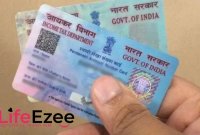How Income Tax and GST Department is Using Data Analytics to Curb Tax Evasion
The Minister of State Shri Pankaj Chaudhary within the Ministry of Finance in a written reply to a query raised in Lok Sabha mentioned, “How Income Tax and GST Department is using Data Analytics to curb Tax Evasion.”
The government is using information analytics, huge information and Artificial Intelligence/Machine Learning in tax administration to make it more practical, free from official discretion, and business and taxpayers pleasant. Data analytics is used to determine fiscal dangers, suspicious traits and patterns and dangerous entities in Customs and GST by leveraging huge information.
Indirect Taxes: The Project ADVAIT (Advanced Analytics in Indirect Taxes) has been rolled out in 2021, as a flagship analytics venture for Indirect Taxes, by CBIC. The venture makes use of capabilities of huge information and Artificial Intelligence as well. ADVAIT has been envisaged with a threefold goal of enhancing Indirect Tax income, rising the taxpayer base, and supporting data-driven tax coverage.
Further, ADVAIT gives business outputs in three codecs: Reports, Interactive Dashboards, and Analytical Models. The performance of every output is particularly designed to assist and help officers in their day-to-day operations that vary from reporting and making certain tax compliance to detecting tax evasion. The portal has superior analytical capabilities together with information matching, community evaluation, sample recognition, predictive analytics, textual content mining, forecasting and coverage research. ADVAIT has been designed and developed in a knowledge-driven information ecosystem utilizing among the most superior information warehousing business intelligence options, protecting the three I’s: Information, Insights, and Intelligence.
Direct Taxes: The Income Tax division is using methods such as information analytics, huge information and Artificial Intelligence/Machine Learning for:
(i) Identifying cases with a High Risk of tax evasion and a high chance of income addition, for additional scrutiny.
(ii) Identifying taxpayers to ship reminders for advance tax funds.
(iii) Prompting particular taxpayers about obvious mismatches in ITRs and transactions made, so that taxpayers might revise their returns.
(iv) Using huge data methods for storage and efficient search of data by income tax officers.
(v) Using data analytics over networks of taxpayers to visualize the taxpayer’s relationships and flag potential high-risk transactions.
(vi) Using data analytics methods to segment taxpayers to focus marketing campaigns on high-risk instances from a tax evasion perspective.




